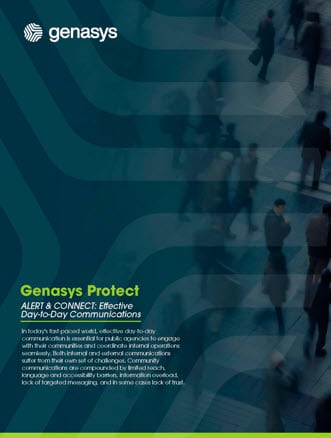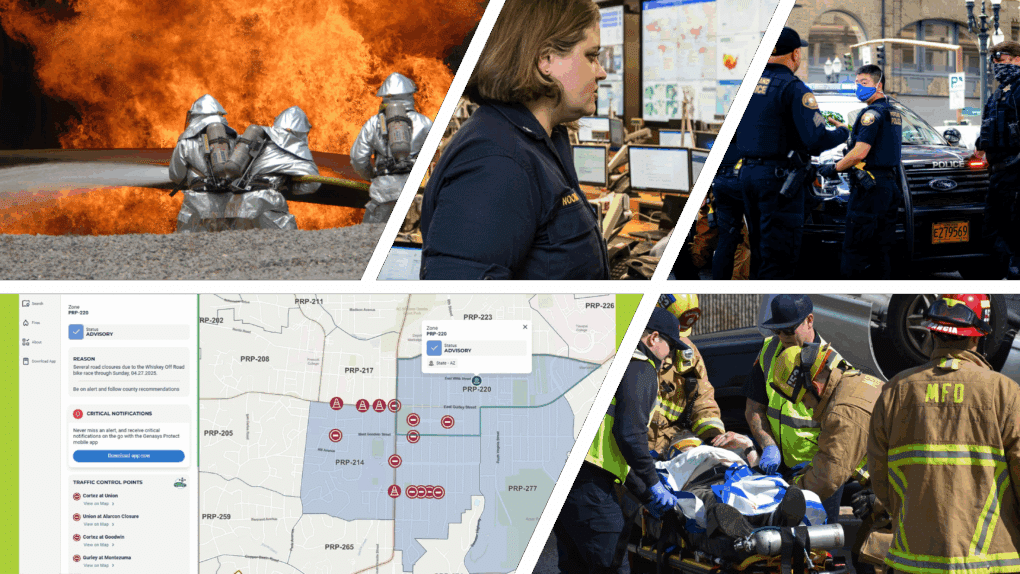By Lewis Clark, Product Manager Genasys ALERT
In today’s emergency management environment, the latest advances in new technology are redefining the methods used by first responders and frontline emergency teams.
The guiding principle at Genasys is to protect lives, and while there is no substitute for firsthand experience or the ‘human element’ during an emergency, technological advances are available to support the overall disaster plan and ensure seamless communication between emergency responders and citizens, as well as the critical lifeline between interdepartmental agencies.
Smart Cloud-Based Technology that Enhances Collaboration
First responders can plan and execute emergency evacuation plans supported by simultaneous, real-time weather predictions, natural disaster updates, traffic conditions, and current flood or fire data. Additionally, advanced simulation and modeling can enhance decision-making, allowing for timely public alerting, keeping citizens informed with enough time to react and get to safety.
When you are responsible for the safety and welfare of entire communities, a robust communications solution that is resilient, comprehensive, and up to date is essential.
Utilizing smart technology that links cooperating agencies with the public (of which 97% own cellphones) provides multiple methods for reaching citizens, so no one is left without vital life-saving information and resources. Real-time information can be disseminated on single platforms with multiple feeds in the following ways:
- Zone-specific updates, like shelter options, livestock housing availability, and road closures, can be communicated to the public through multiple channels including SMS, email, social media, and IPAWS.
- Subscribed alerts and updates can be provided in real-time to the community with map-defined evacuation plans and links to resources they can access within their own predefined zones.
- For those without cellphone access or coverage, local media can rely on the same zone-specific information platform to ensure continuity during an emergency. Additionally, strategically placed and vehicle mounted long range acoustic devices can broadcast alerts and information to the public even if they don’t have access to technology.
Geo-Targeted Multi-Channel Mass Notification
A combined messaging platform capable of reaching large numbers of people via smart devices as well as mass messaging through pre-placed speaker arrays has a higher chance of reaching the public. Sending alerts via multiple channels increases message penetration rates which is the rate at which people receive, understand, and effectively respond to messages. For example, if a person receives an alert on SMS and email and sees it on their social media feed, they are more likely to act.
Additionally, activating powerful LRAD speakers that transmit voice messages over many miles when existing power and communications infrastructure has failed is a unique life saver, whether responding to natural disasters or human-triggered calamities.
While this is highly efficient in urban or suburban areas, it can also be successfully deployed in more sparsely populated areas. The key to a mass notification system is having alternative power (such as battery and solar), satellite connectivity, geotargeting, and interagency cooperation.
Using High Tech Solutions in the Planning Phase
In times of emergency, ensuring community safety is of paramount importance. Being able to do your job effectively means being prepared and leaving nothing to chance.
That means developing and rehearsing strategies that can be implemented immediately when disaster strikes. It also means involving your community, helping them identify reliable information sources and respond effectively.
Deploying a high-tech solution will involve educating community members on a variety of issues, like subscribing to alerts, knowing local zones, and personal preparedness. Each of these ways to connect further develops the partnership between an agency and its citizens, helping your community be ready to respond to an emergency.
Minimizing chaos is a hallmark of any organized evacuation scenario.
Final Thoughts
As we see natural disasters having ever more perilous outcomes, deploying critical communications solutions will keep your team and community well informed ahead of, during, and after potentially deadly situations.
From initial disaster preparedness planning through live evacuation and rescue/recovery operations, smart technology can be effectively deployed in communities where rapid responses save lives.
Contact Genasys to learn more about the ways we can aid your emergency response team through our Genasys Protect Platform with ALERT, ACOUSTICS, EVAC, and CONNECT.

















